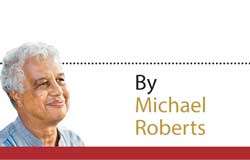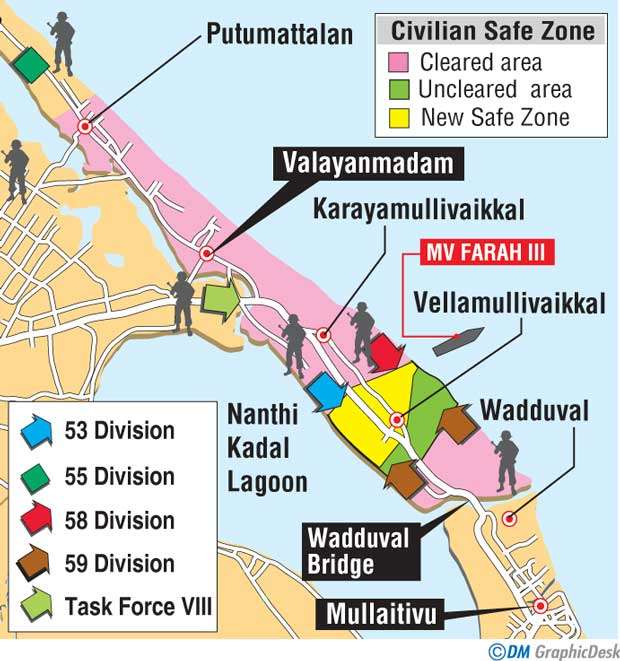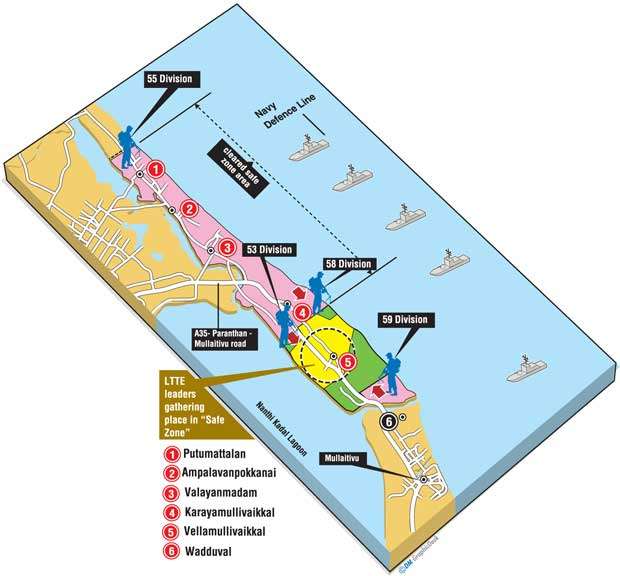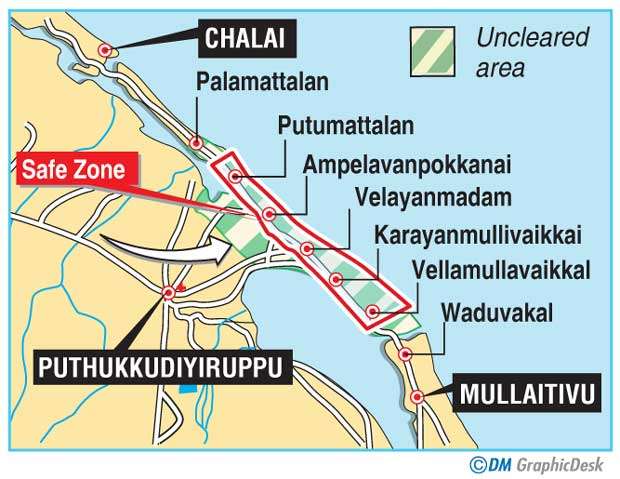Reply To:
Name - Reply Comment
 This essay is an effort to unravel the whispers about an American military team’s secret mission to Sri Lanka at the height of the SL armed forces successful squeeze on the LTTE in 2009. The political significance of such a mission is profound and there are numerous tangential issues that are also significant.
This essay is an effort to unravel the whispers about an American military team’s secret mission to Sri Lanka at the height of the SL armed forces successful squeeze on the LTTE in 2009. The political significance of such a mission is profound and there are numerous tangential issues that are also significant.
The opening to this inquiry in 2018 was provided by Chandre Dharmawardana’s welcome initiative in making an ethnographic notation about information mentioned by Foreign Minister Bogollagama in 2012. This item led me (earlier this year) to link it with other ‘morsels’ of information and to explore the pressures mounted on the GoSL by the Western powers during the last phase of Eelam war IV in 2009. These inquiries have now produced additional information -- morsels once again, but enough to take further steps in unravelling the interventions of USA and its allies. I will mark them in point form as A, B, C et cetera.
A – Ishanka Jayathilaka intervened and brought to light an “exclusive news item” in the Sunday Times of February 22, 2009 which asserted that “a Donor-Co-chair-backed humanitarian operation, spearheaded by the United States, to evacuate civilians trapped in the fighting in the Wanni is now taking shape.” This enterprising Sunday Times journalist added that “a high-level team of the United States Pacific Command (US PACOM) from their headquarters in Hawaii is now in Colombo for this purpose.”
B - This news item alters my previous belief that the recce team came in April and thus enforces a modification in my presentation of the Chandre Dharmawardana item.
C - A well-connected friend with military experience (XY below) was stimulated by my article to search for more information among officers in the armed forces and he sent me this note on April 22, 2018: “Having spoken to several people who denied any knowledge, I was informed by a senior SLAF officer who was serving then, that there were several requests in this regard from high-profile US and Indian officials who were present here during that time to bring in Special Forces to ‘help’ the SL Government, but it was obvious that the real purpose was to rescue Prabhakaran. My friend added that if that had been allowed, we would still be fighting the LTTE, but we Lankans were fortunate to have a President and Defense Minister who did not cave in to these demands.”
D - By pure chance, I came across another news item conveying Rohitha Bogollagama’s opinions and information which relate to this particular event. The pertinent segment runs as follows:
The then US Ambassador Robert O’ Blake, who once visited me, wanted to bring an advanced mission to Sri Lanka to see if the surrender would work out -- for the LTTE to surrender to American troops. That was resisted. There was an advanced intelligence team from Hawaii that landed in Sri Lanka to work out the logistics and apparatus. In fact, I did not want that team here. I restricted them to the airport and they went back. Little was known to the general public. We tactically got New Delhi associated with our engagement.

Reworking this information by skimming off the self-aggrandisement, it appears that the American assessment team detailed with working out means of effecting the Washington-Blake scheme of persuading the LTTE to surrender was stymied by the firm stance taken by the Sri Lankan leaders with the covert support of the Indian Government -- covert to the world but not to USA (see below). The key fact or rather apparent fact -- arising from Bogollagama’s little ‘excursion’ is that the team did not get beyond the airport and met GoSL personnel there (if any).
The then US Ambassador Robert O’ Blake wanted to bring an advanced mission to Sri Lanka to see if the surrender would work out -- for the LTTE to surrender to American troops
E -Having met the senior SLAF officer referred to in B above on June 24, 2018, I was informed that US officers in civilian clothes visited the SLAF HQ in Colombo on one occasion in 2009. He thought it was April but could not be certain. This crucial piece of information suggests that Bogollagama was spinning a tale when he indicated restriction to the airport or, alternatively, that yet another team had arrived in Sri Lanka later in pursuit of renewed US and Western efforts to intervene in favour of the LTTE and the Tamil civilians.

F - These items of information should be set within the context of information provided by Mark Salter in a section within his To End A Civil War (2015) which has the sub-heading: “Last Gasp Norwegian peace efforts.” Here he writes:
“Towards the end of February, reports began to emerge of a Co-Chairs initiative to move civilians trapped in the war zone via the deployment to the northeast coast of US military assets, principally Navy and Air Force craft. Foreign Minister Bogollagama pronounced himself ‘aware’ of the initiative while also underlining the fact that the government was talking to several other friendly countries -- in particular India -- about the options for evacuating civilians… Critical to continued Norwegian efforts to achieve a peaceful ending to the conflict was a secret meeting in Kuala Lumpur between Ambassador Tore Hattrem and chief LTTE representative Kumaran Pathmanathan commonly known as ‘KP.’ Organised with the support of Basil Rajapaksa, the meeting was also attended by Jon Westborg and Tomas Stangeland on the Norwegian side and V. Rudrakumaran and Jay Maheswaran on the LTTE side (2015: 348).”
G - Whether by design or through carelessness, Salter often does not present the dates of events -- a cardinal sin in scholarship. On this occasion too, he does not tell us when precisely the Kuala Lumpur meeting was held. I had hitherto worked within the hypothesis that the USA’s recce team had visited Sri Lanka AFTER the Kuala Lumpur gathering. I am wrong. The information ferreted out by someone in the Sunday Times suggests that the international consultation and scheming centred around KP was after an American assessment team had visited the island. Alternatively, both events were more or less coincident.
H - Jeyaraj’s subsequent discussions with KP reveal quite clearly that Pathmanathan’s focus was directed towards working out a plan to get the LTTE leadership away to an amenable country -- with Eritrea, South Africa and East Timor as the favoured nations.
I - The various details in the To End a Civil War, the Wikileaks body of US dispatches and government documents relating to the Co-Chair Consortium in Sri Lanka show that the lead-role in the Western-power inputs in the latter bodylay with Blake (representing the US Secretary of State). In part because of their generous financial aid, the key players in the Co-Chair Consortium (chaired by Mahinda Samarasinghe) were a foursome: Blake, Hattrem and the British and French ambassadors. In effect, the indications are that the Norwegian-role at Kuala Lumpur was as proxy and/or ‘lieutenant’ for USA (a thesis that is being developed by Ishanka Jayathilaka). The four-power combination was thereafter displayed in April 2009 when (Ia) Blake commanded Gotabaya Rajapaksa -- circa mid-April 2009 -- to refrain from attacking the Last Redoubt [that is the “No Fire Zone” in his misleading nomenclature]; and (Ib) the foreign ministers of Britain, Norway and France hastily assembled and sought entry to Sri Lanka in late April 2009 so as to pressurize the government.
The moral fervour and determination of this endeavour was etched in David Miliband’s face throughout his stay in Sri Lanka. His demand was rejected point-blank by President Rajapaksa (aided by the quiet backchannel support of India).

J -Incidentally, these stray pieces of information indicate that Bogollagama was providing a misleading spin when he told Dharmawardana that a “commando team had turned up in Sri Lanka.” So, his tall-tales are now relegated to a footnote status in our inquiries. However, his second public statement in 2017 (in red above) is of much greater weight.
K - Mark the date when an American assessment team seems to have landed in Sri Lanka: at some point in mid-February or around February 20 or 21. At that stage the LTTE still held PTK. Nay more: their fighters had utilised a short-term GoSL ceasefire in early February to launch a highly-successful attack which involved the use of explosives to bust the Kalamadukulam reservoir embankment and flood SL Army positions. At one point, the 59th Division’s 53rd Battalion was pushed back three kilometres. It was only the presence of reserve battalions that enabled the SL Army to stem this counter-attacking advance. Thus, at this point, it was difficult for anyone to conclude that the defeat of the LTTE was around the corner -- even though one could reasonably surmise that it was a likely outcome in the longer run.
L - What then was the PACOM recce team assessing? We will never gain concrete data about their objectives. We can reasonably surmise that they wished to protect the corralled Tamil civilians and secure their evacuation to Trincomalee as one element in a deeper, complex plot to save the Tiger leadership (with the exception of Pirapaharan and Pottu Amman) who were to be spirited away to Eritrea or South Africa or Timor. That much is clear from KP’s chat with Jeyaraj and the effusive speech from Mike Owens on May 6, 2009 which Daya Gamage revealed to the world. Here, then, is the conclusive verdict from an impeccable source: “the effect of what was being proposed would have been to keep the LTTE alive politically and possibly militarily” -- the Indian Foreign Minister Shivshankar Menon in response to in 2017 reporter Kelum Bandara’s question on this line of interference.
M - We also know that the American recce team felt that these goals were difficult to secure: in their assessment the situation in Sri Lanka made their goals “a non-permissive exercise.” That incisive line of American military jargon was presented to an American journalist who called in at the embassy in Colombo seeking news about the assessment mission. That summarizing evaluation was guided by the searing experiences of the US Armed Forces when they intervened at Mogadishu in Somalia in October 1993 – experiences which have been deeply seared into the American body politic and is encapsulated in the catch-phrase “Black Hawk Down.
N - One reason why the exercise was not feasible has been set out by my friend at Point C above: Mahinda and Gotabaya Rajapaksa did not accede to these ‘requests’ and pressures then; while I have shown via a study of the Wikileaks dispatches that two months later in mid-April Gotabaya blandly accepted Robert Blake’s insistence that the SL Army should cease its advance -- though Gotabaya would have been wellaware that the SL Army would initiate an attack on the LTTE’s remaining territorial space within the week and that the Sri Lankan Government was determined to defeat the LTTE before the Indian general elections occurred in mid-May.
O - We know that this sturdy position was enabled by the mutual understandings that were being worked out in quiet backroom meetings between sets of three officials on the side of the Indian and Sri Lankan governments. It was P.K. Balachandran who first brought the mechanism to my notice and thus to public notice. M.K. Narayanan (National Security Advisor), Shivshankar Menon (Foreign Secretary) and Vijay Singh (Defence Secretary) were India’s troika; while Basil Rajapaksa, Gotabaya Rajapaksa and Lalith Weeratunga were Sri Lanka’s threesome. Lalith Weeratunga has recently provided several pertinent details on when these arrangements got moving and how they worked; while Rajiva Wijesinha and Dayan Jayatilleka have supplemented the information with useful commentary.
P - The most critical point, however, has been made by Balachandran. He has told us that the “Congress government in Delhi was fully with the Lankan objective of annihilating the LTTE and Colombo recognised this.” This reading has been confirmed now in the public engagements of the former Foreign Secretary of India, Shivshankar Menon, in addressing his new book Choices. We can go further and assert that the troika meetings were designed to sustain Sri Lanka’s understandings on this point and to downplay the public charades of the Indian political leaders.
Q - On this basis and from the recent news reports provided by Lalith Weeratunga and Rajiva Wijesinha on how the two sets of troika master-minded Indo-Lanka relations behind the scenes, it is evident that a key figure in those mediations was the Indian Ambassador in Colombo, namely Alok Prasad. To my mind this raises the possibility that Alok Prasad went into action when the US recce specialists arrived in February 2009 (and again later?) and that India’s hostility scotched this line of American imperial action – gunboat diplomacy in humanitarian attire if ever there was such a thing. Did Prasad speak to Blake at this moment? Or did the Indian ministers in Delhi convey the government’s thoughts to USA via the latter’s ambassadorial office in Delhi? Will we ever know? I am whistling into the wind.
R - These items of information highlight the remarks with which I ended my previous excursion in this field. The Sunday Times journalist who ferreted the information (reported below) was a real sleuth. Few other reporters seem to have learnt of the presence of US military officials in Sri Lanka on some assessment mission while the mission was ongoing. Nor were many military and air force commanders in the SL armed forces in the know. My well-connected friend hit many blank walls till he received a vital morsel from an SLAF officer. We are still in the dark about whom the US recce team met and whether they discussed the battlefield situation with their own Military Attaché in Colombo (Lt. Col. Lawrence Smith). Secrecy is not a characteristic of Sri Lankan life. But it is an ingredient in the art of war as well as diplomacy. It does not pay to rub salt into the wounds encountered by Uncle Sam in Sri Lanka in 2009. Ssshhh is still the word.